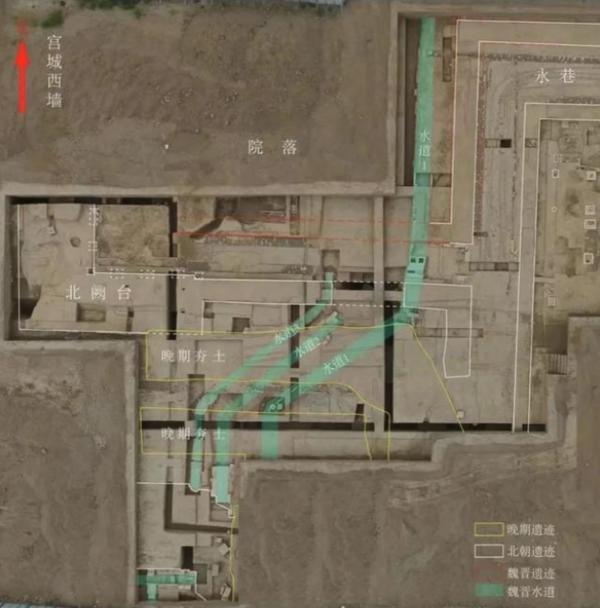New discoveries have been made at the ruins of the ancient city from Han to Wei dynasties (202 BC-534) in Luoyang city of Henan province, said local authority on June 11. Archaeologists announced that they have identified the positions, structures and current preservation of the ruins of Qianqiu Gate, a gate of the palace buildings of the Northern Wei Dynasty (386-534), and the ruins of watercourses dating back to the Wei and Jin dynasties (220-420), which deepens the understanding of the architectural layout and functional zoning of the palace areas and provides reliable data for preservation and exhibition.
Ruins of Qainqiu Gate. [Photo provided to Henan Daily]
During the excavation of Qianqiu Gate, archaeologists discovered the stone or brick ruins of watercourses of the Han Dynasty (202 BC-220), the Wei and Jin dynasties (220-420) and the Northern Wei Dynasty (386-534), which were used as channels of water diversion from outside to the palace and vice versa. "The large arch-type watercourse built no later than the Han Dynasty consist of internal and external structures built with bricks, of which the internal one is not only 1.2 meters in width and well-preserved, but also an important discovery of the early architectural relics at the ruins," said Liu Tao, associate research fellow of the archaeological team on the scene with the Institute of Archaeology under the Chinese Academy of Social Sciences.
These facilities reflect the mature skills of water conservancy projects in the Wei and Jin dynasties, as well as the old city's cognition of the planning, transformation, and utilization of water resources. (Chinese source: Henan Daily Reporter: Guo Ge Translator: Zhao Hanqing Proofreader: Ding Lan)



